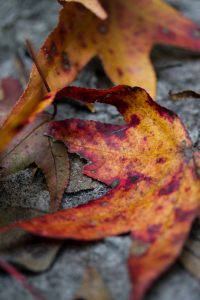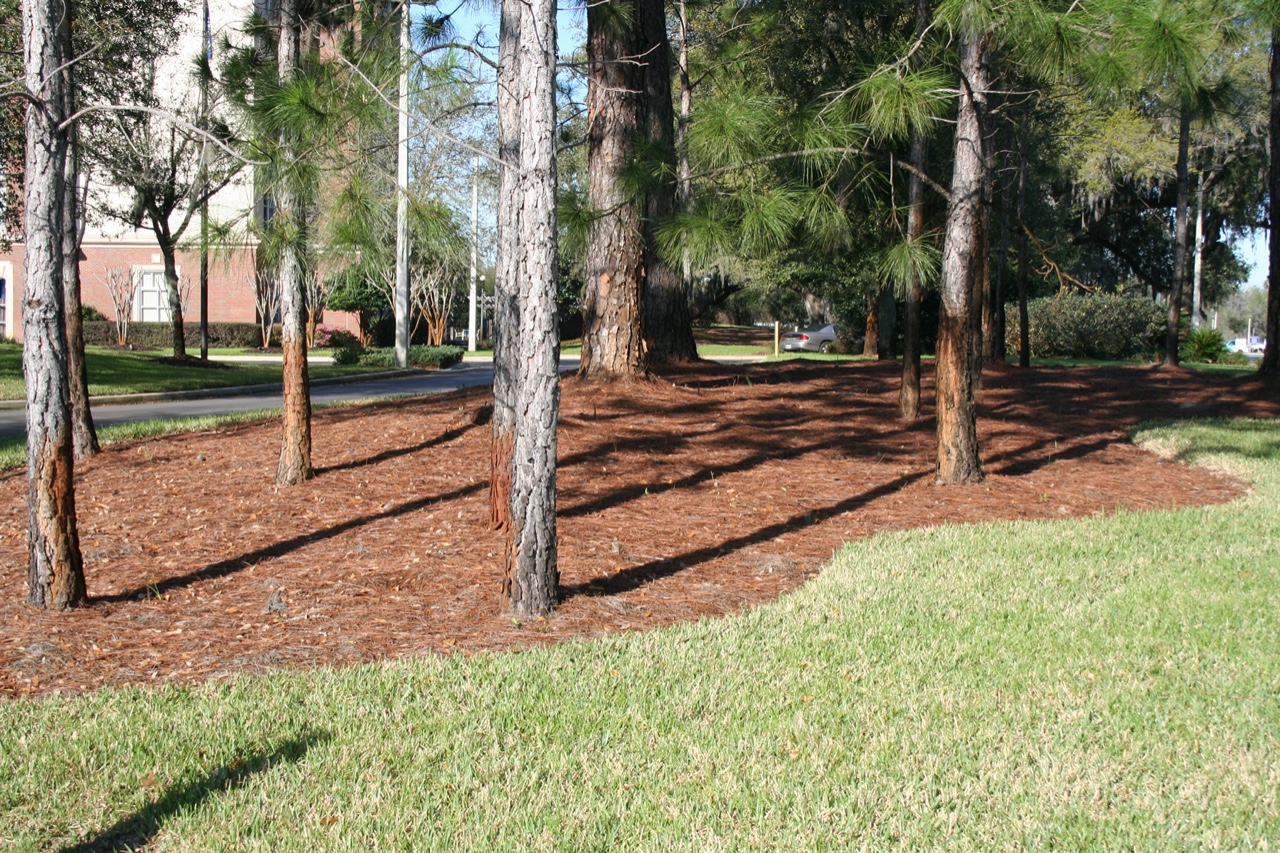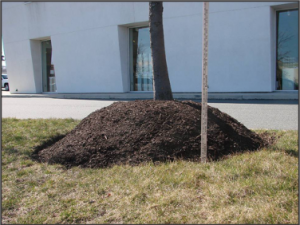
Let the leaves be!
If you have a tree in your landscape, tree-cycle your leaves as mulch or compost. This Florida-Friendly Landscaping™ practice will reduce the amount of waste that you generate while providing benefits to your landscape. Just let the leaves fall in place or rake into nearby landscape beds as mulch. They will help sustainably recycle nutrients, improve moisture retention in the soil and encourage beneficial microbes that are part of healthy forest ecosystems.
Tree leaf mulch
Tree leaves are great for mulch because they contain a lot of carbon and decompose slowly. In fact, as these leaves break down, they will amend the soil as they release a small amount of nutrients and organic matter. Leaves contain a waxy coating on the leaf surface that makes them hard to decompose. For faster decomposition, run your mower over the leaves to chop them first.

If leaf mulch is not aesthetically pleasing to you or your neighbors, simply purchase a few bags of wood chip mulch to cover the leaves. Bagged pine bark and melaleuca mulch are recommended over cypress mulch, as it is difficult to determine if the cypress has been sustainably harvested. Pine needles are the easiest to tree-cycle as they make beautiful and tidy mulch and are easy to rake. Larger leaves such as sycamore may need to be watered down to help them stay put so they don’t blow away.


Another benefit of tree leaf mulch is it will help keep weeds under control. Mulch biodegrades so it needs to be replenished at least once per year. Maintain mulch in your landscape beds to a thickness of 2 to 3″. Remember to avoid “volcano” mulching where the tree trunk is covered up. Pull the leaves and mulch at least 2 inches away from the tree trunk to expose the tree root flare to allow for oxygen exchange.
Tree leaf composting
Leaves are also a valuable addition to a compost pile. They can be stored in large pots or bags for later use in the compost. In composting, leaves are considered brown carbonaceous material that can be used to bulk up the pile or cover fresh food waste. For more on composting, see Composting Tips for the Home Gardener.
Tree-cycling also means less plastic waste and less work, with no bagging or hauling to the street and getting transported to the composting facility at the landfill. You can also save money with less purchased mulch and fertilizer.
Tips for tree-cycling
• Use a soft leaf rake. Hard rakes with stiff metal tines can be rough on your lawn.
• Chop leaves by running them over with a mower to accelerate leaf decay
• Greater tree species diversity will result in a wider range of nutrients you will be cycling in your landscape.
Resources
Orange County Florida-Friendly Landscaping™ program
Can I Compost It? Guide to Composting Materials
UF/IFAS Gardening Solutions: Alternative Composting Methods
Florida-Friendly Landscaping™: Recycle Yard Waste
Want to learn more? Check out horticulture classes offered by UF/IFAS Extension Orange County at www.gardenflorida.eventbrite.com. Read about Florida-Friendly Landscaping™ at https://ffl.ifas.ufl.edu/. Follow us on Facebook at https://www.facebook.com/GardenFlorida/ and Instagram at https://www.instagram.com/oc_extension.
 1
1
